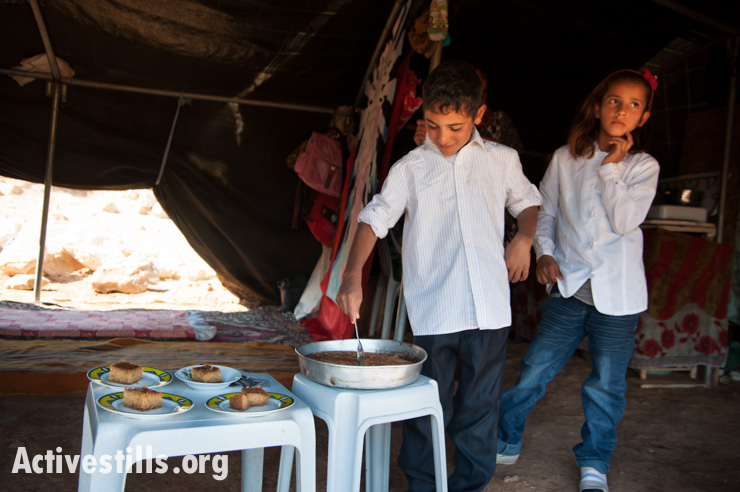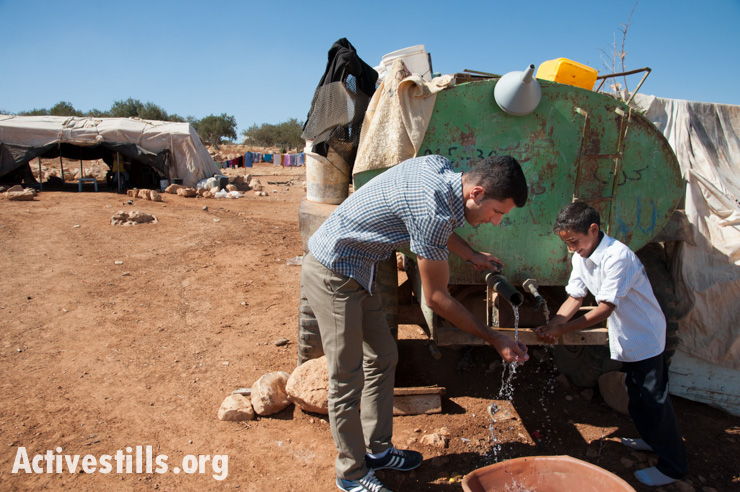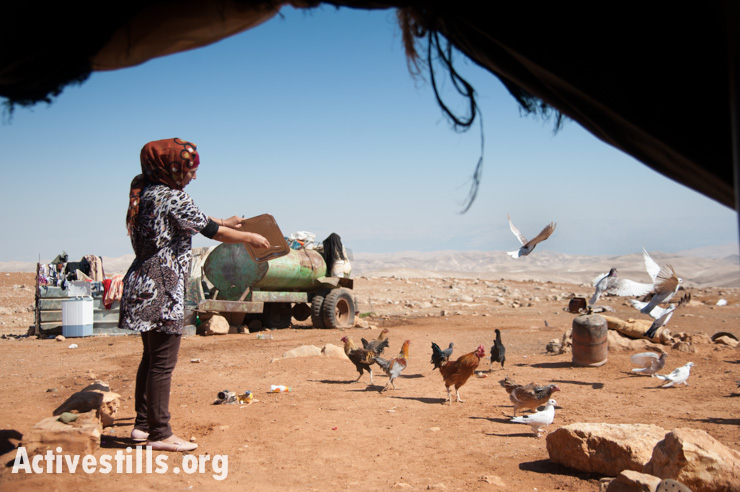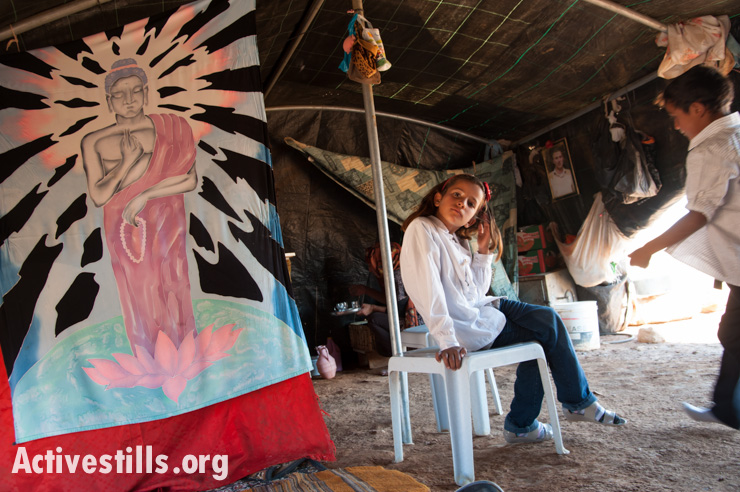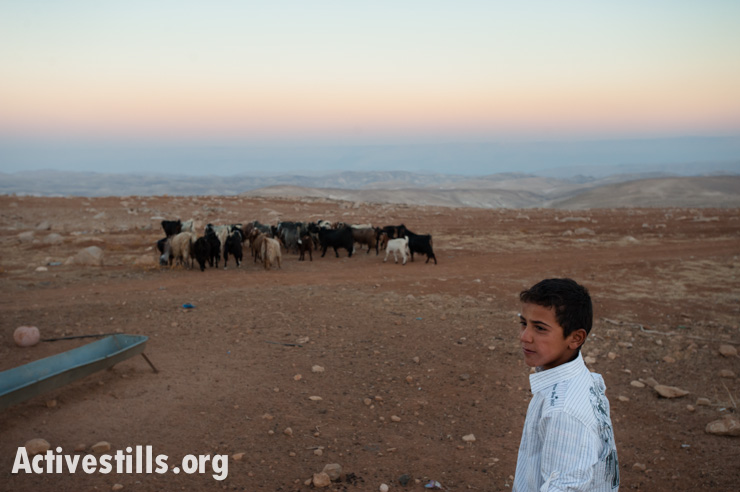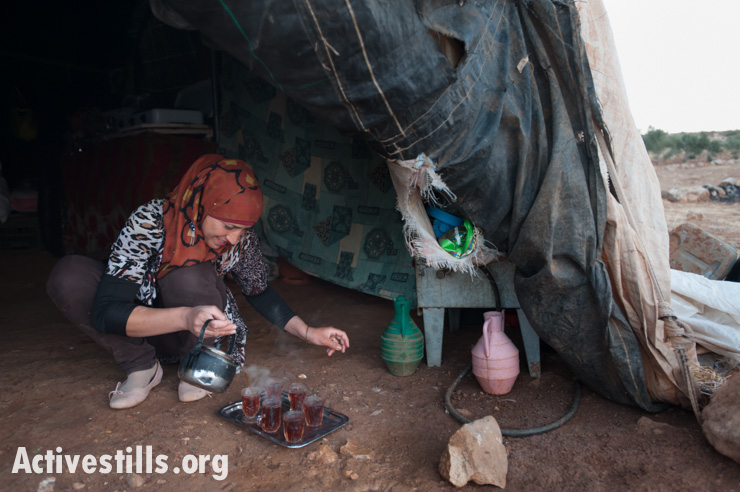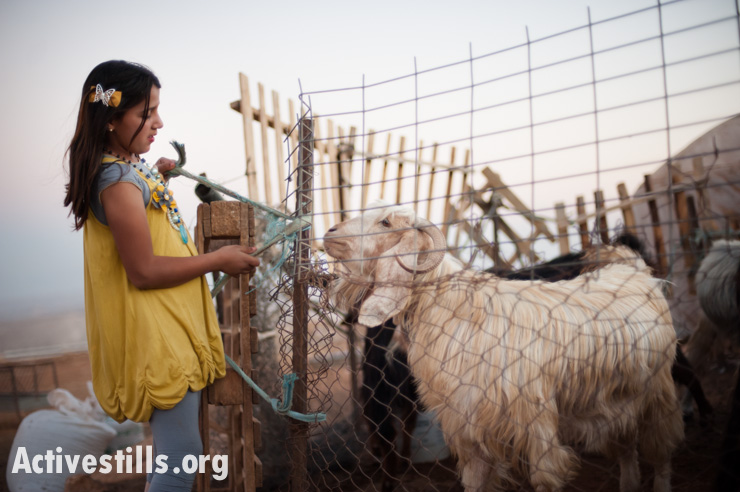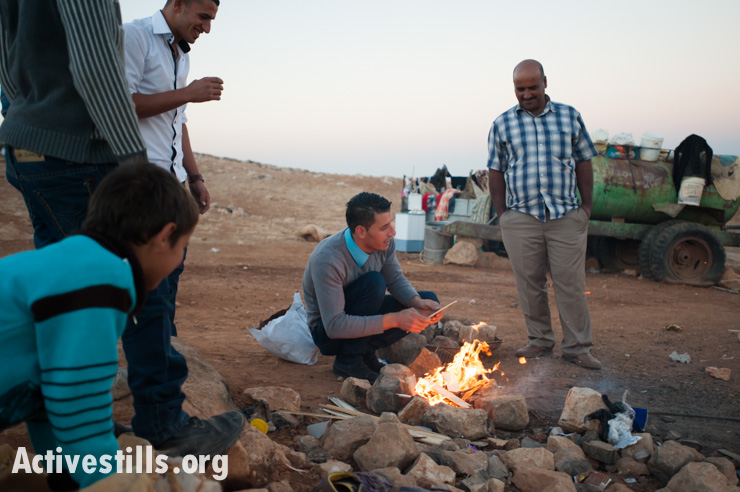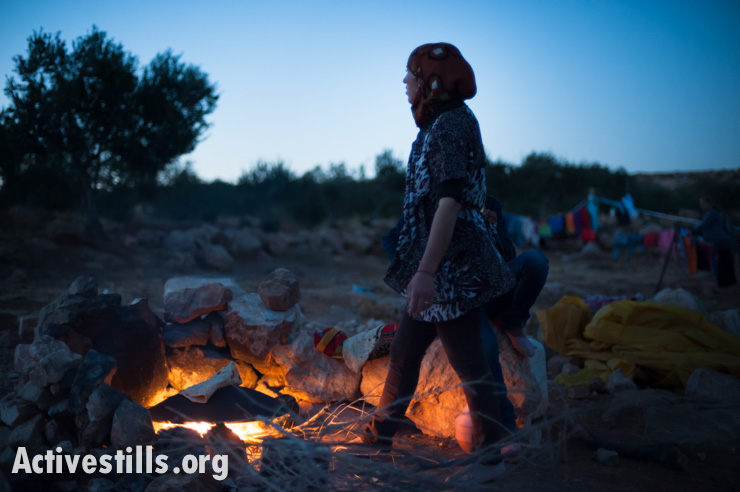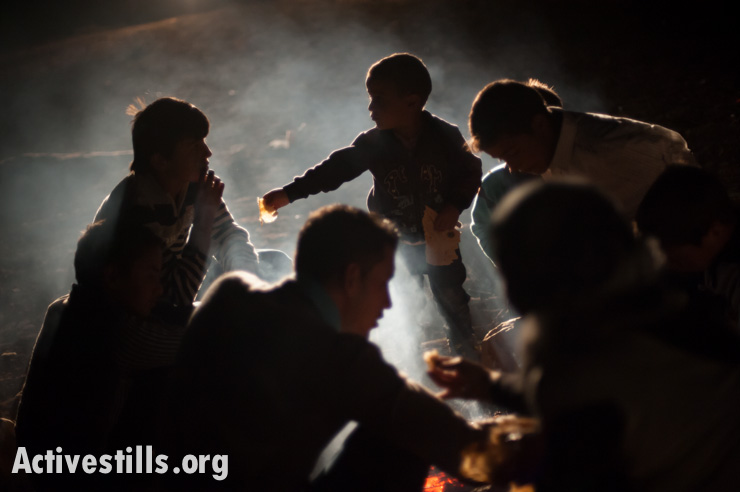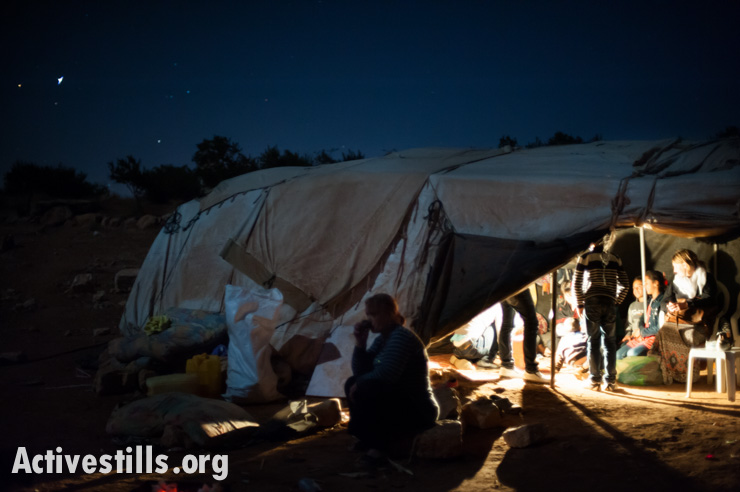In the Jordan Valley, it is virtually impossible for Palestinian families to get the permits to build a home: their buildings are demolished and they are forced to live in tents and tin structures with no electricity or water. Illegal Jewish settlements, however, are rarely demolished and are connected to the electricity and water grids. Activestills joins one family that has been living in a tent without basic services for 10 years as they celebrate the first night of the Muslim holiday of Eid al-Adha.
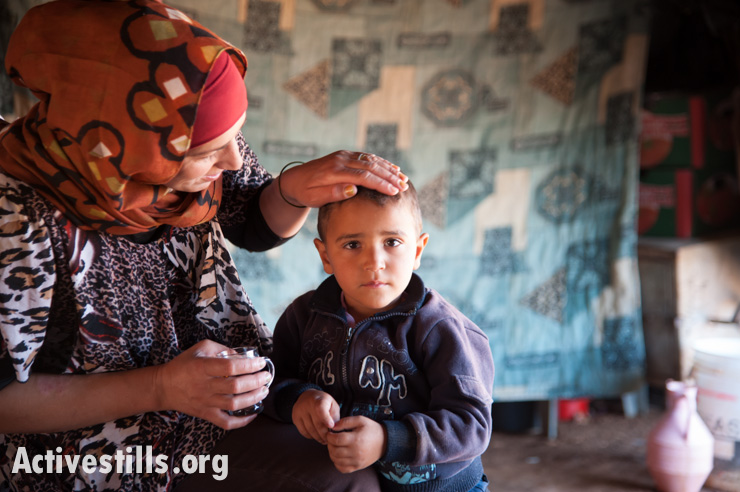
Samiha and Suleiman Shalalda live with their five children in a tent on the edge of the Jordan Valley desert, with a view of the Dead Sea in the distance. On the first day of Eid al-Adha, the “Feast of the Sacrifice,” family visitors filled their tent with food, gifts and laughter. According to Muslim tradition, the holiday celebrates Ibrahim’s willingness to sacrifice his son Ismail, when God instead provided a sacrificial lamb. As the setting sun illuminates the horizon Jordanian mountains with pastel hues, roasted meat from sheep slaughtered to honor God’s provision fills folds of flatbread baked over open fires.
The beauty of the location and occasion, however, cannot disguise the ugly reason that this family must live on the edge of the desert without access to running water or electricity. Like many Palestinians living in Area C, the 61 percent of the West Bank that is under total Israeli control (both civil and security), they found it impossible to get a building permit when they were newly married. The house they did build, near the town of Sa’ir, was quickly demolished by Israeli authorities. Since then, they have lived in a tent near Al Maniya, now adjacent to the site of a newly constructed USAID-funded landfill. For more than 10 years, their water has come from a tank that they must pay to refill from delivery trucks. Their only electricity comes from a small gas-powered generator that they use sparingly.
For those who would blame Samiha and Suleiman for these circumstances because their house and even current shelter are “illegal,” and governments anywhere would take similar action, it’s important to note that the Israeli military occupation differs greatly from the civilian authorities in most other countries. According to a report issued by the Israeli Committee Against House Demolitions (ICAHD) (emphasis added): “Under Israeli zoning policy, Palestinians can build in just 13 percent of East Jerusalem and in just 1 percent of Area C…. More than 94 percent of all Palestinian permit applications have been rejected in recent years.”
Israeli human rights organization B’Tselem provides more vital context (emphasis added):
Israel has created a situation in which thousands of Palestinians are unable to obtain permits to build on their land, and are compelled to build without a permit because they have no other way to provide shelter for their families. … At the same time, at least 155 Israeli settlements, containing more than 170,000 Jewish Israeli citizens, have been established. These settlements benefit from an efficient system of planning and supervision of construction, and establishment of comprehensive planning schemes for all the settlements. Despite this, thousands of houses were built in these settlements without permits. Israel refrained from demolishing these houses, and instead issued retroactive building permits for thousands of houses constructed without permits. This building-permit policy blatantly discriminates between settlers and Palestinians.
Case in point: Ibei Hanahal, the Israeli settlement outpost just a few kilometers down the road from the Shalalda family’s tent, enjoys full electrical and water access from the Israeli grid. While all Israeli settlements in the West Bank are considered illegal under international law, outposts like Ibei Hanahal, built illegally even according to the Israeli government, are rarely demolished.
Samiha and Suleiman have begun building a new permanent house nearby, but as it is also in Area C, they have received stop-work orders from Israeli authorities. Nonetheless, as resources become available, they plan to continue building, citing the fact that their neighbors have received similar orders, with no action taken. The family hopes that once they inhabit the house they will be able to successfully forestall demolition through the courts. It’s a plan with obvious risks, but when you’re living on the margins of occupation, with limited resources, what choice do you have?
